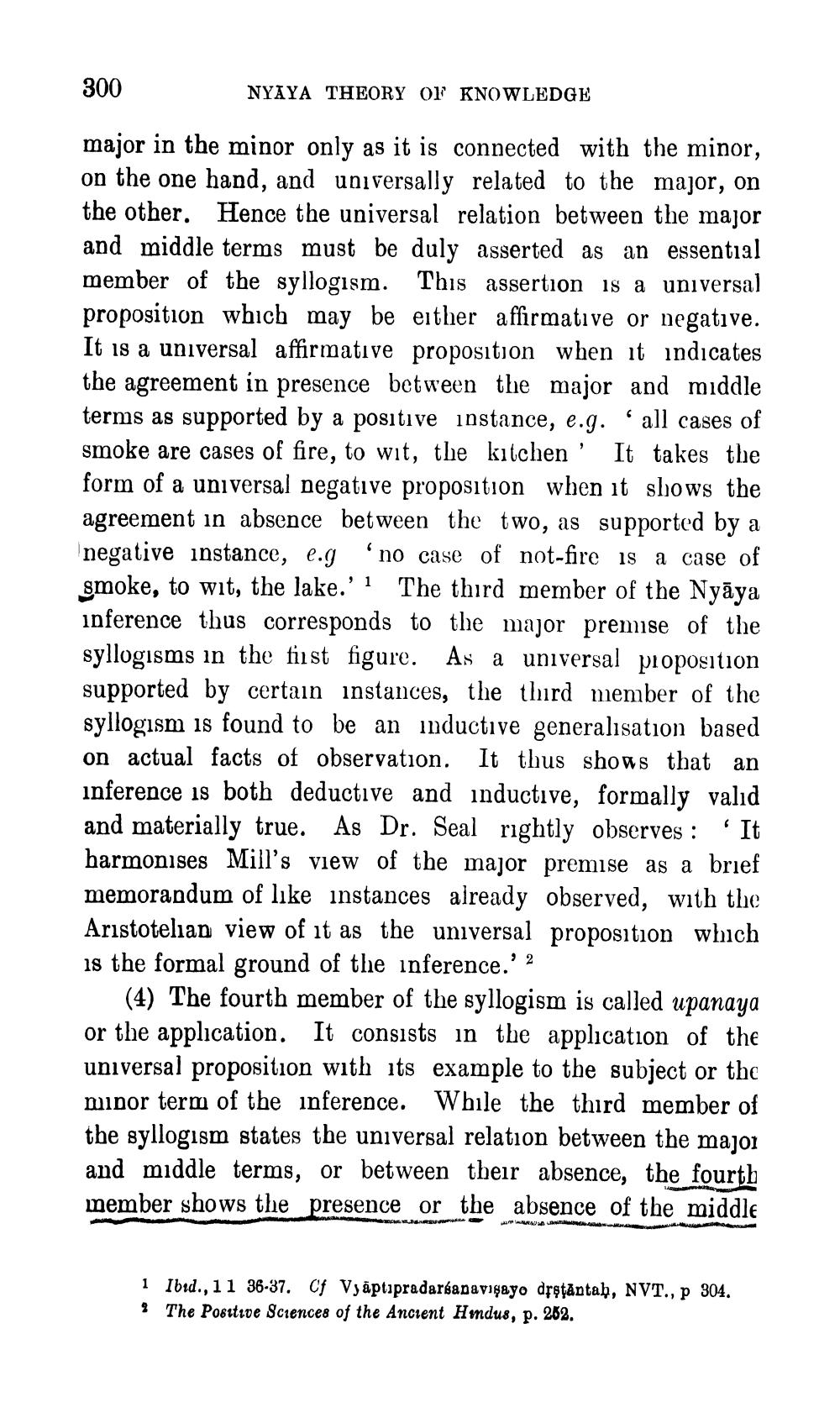________________
300
major in the minor only as it is connected with the minor, on the one hand, and universally related to the major, on the other. Hence the universal relation between the major and middle terms must be duly asserted as an essential member of the syllogism. This assertion is a universal proposition which may be either affirmative or negative. It is a universal affirmative proposition when it indicates the agreement in presence between the major and middle terms as supported by a positive instance, e.g. 'all cases of smoke are cases of fire, to wit, the kitchen' It takes the form of a universal negative proposition when it shows the agreement in absence between the two, as supported by a negative instance, e.g 'no case of not-fire is a case of smoke, to wit, the lake.' 1 The third member of the Nyaya inference thus corresponds to the major premise of the syllogisms in the first figure. As a universal proposition supported by certain instances, the third member of the syllogism is found to be an inductive generalisation based on actual facts of observation. It thus shows that an inference is both deductive and inductive, formally valid and materially true. As Dr. Seal rightly observes : ' It harmonises Mill's view of the major premise as a brief memorandum of like instances already observed, with the Aristotelian view of it as the universal proposition which is the formal ground of the inference.'
(4) The fourth member of the syllogism is called upanaya or the application. It consists in the application of the universal proposition with its example to the subject or the minor term of the inference. While the third member of the syllogism states the universal relation between the major and middle terms, or between their absence, the fourth member shows the presence or the absence of the middle
NYAYA THEORY OF KNOWLEDGE
92
1 Ibid., 11 36-37. Cf Vyaptipradaréanavışayo drstantaḥ, NVT., p 304. 2 The Positive Sciences of the Ancient Hmdus, p. 252.




